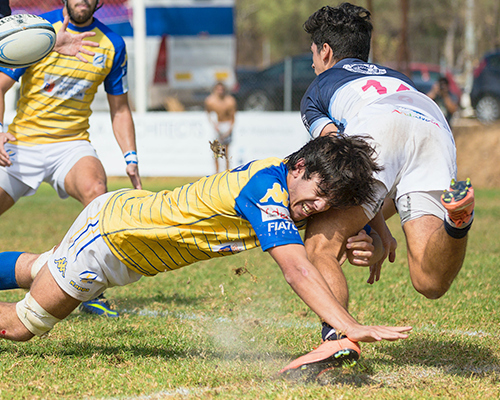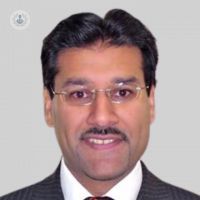Shoulder injuries in rugby: treatment to get you playing again
Written in association with:Shoulder joints are one of the most common injuries in rugby. Mr Amer Khan, an orthopaedic surgeon and sports injuries specialist, highlights how these happen and explains which injuries are more likely to need surgery.

How common are shoulder injuries in rugby?
In rugby, the shoulder is one of the most commonly injured joints. The combination of stability with mobility makes it more unique compared to other joints. There is a fine balance between the rotator cuff muscles and ligaments, and so while it should theoretically be dislocating more often, it doesn’t. With contacts sports such as rugby consisting of tackles and direct physical force, injuring the shoulder is much more easily done.
The rugby tackle alone is the cause of around 70 per cent of shoulder injuries in professional and non-professional rugby players. The specific shoulder problem depends on the position of the arm at the time of injury. For example:
- During a tackle, if the tackling player’s arm is out at the side and grabbing their opponent’s leg, the joint might end up dislocated. It could also tear at the labrum (a type of cartilage in the shoulder joint) or tear in the biceps tendon at the point where the tendon attaches to the top of the shoulder socket – this is known as a SLAP tear.
- By diving towards the ground with outstretched arms and levering them backwards, the try scorer often suffers similar injuries.
- If a player is holding the ball tight to their chest with their arm tucked at their side, a direct hit from a fall or collision can cause an injury between the collar bone and the top of the shoulder (this is the acromioclavicular joint). It’s one of the most common shoulder joint injuries.
Is surgery always necessary?
A lot of shoulder injuries will not need surgery and instead, sports physiotherapy and joint injections (if appropriate) can be enough.
However, if the pain continues, it’s worth seeking the help of a shoulder specialist . We (orthopaedic surgeons) can provide further investigation and management of the problem. Ultrasounds are useful in diagnosing tears in the tendon, particularly the rotator tendon, but if nothing is found, an MRI or CT scan might be needed to help look for labral tears or a fractured (broken) shoulder.
What types of surgery might be offered?
Some injuries, such as simple labral tears -including SLAP tears or rotator cuff tears- can be repaired with shoulder arthroscopy, a minimally invasive surgery that is generally a day case procedure. It’s followed by wearing a sling for several weeks to keep the arm and shoulder immobile.
Other injuries, such as those where there is a serious injury to the bony socket, need to be treated with open surgery. This involves taking a part of the bone and tendon from one part of the shoulder or bone donated from a deceased donor and using them to fill the injury in the socket. Thanks to advancements in arthroscopic surgery, surgery can be performed through smaller keyhole incisions. As a result, patients recover faster and have less scarring post-op.
Mr Khan is on hand to advise you on the diagnosis and management of shoulder and knee conditions. Learn more and arrange your first consultation.


